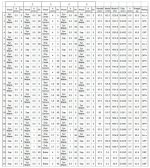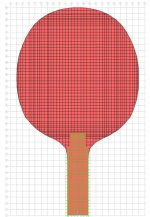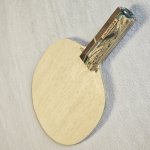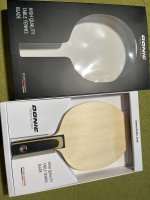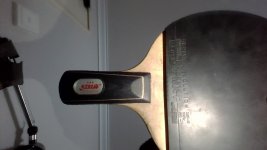This user has no status.
Being an over thinker as i am, i wanted to see if i could predict the rating of a blade before i build it. So, i decided to make a numerical model of a blade and analyse the results by changing several properties. The shape of the blade and the mechanical properties of the materials are always the same, the thickness, direction of plies, arrangement of plies and length of the handle are variable.
We all know that wood is all different, even in the same species and even the same board. The mechanical properties are very hard to predict and, because wood is orthotropic, the properties are different in all directions. Also, this model doesn't account to several other factors as the type of glue used. Nonetheless, if the mechanical properties used are not changed, i can at least make a comparative analysis between the models and predict if a blade is going to be faster then the other.
To make this comparison i studied several factors:
I will show some images of the model and the modes of vibration. The shape of the modes are the same for all the models, but the frequency changes.
Mode 1
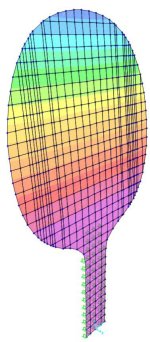
Mode 6
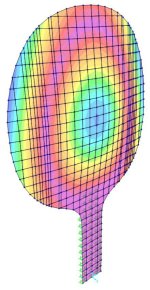
We all know that wood is all different, even in the same species and even the same board. The mechanical properties are very hard to predict and, because wood is orthotropic, the properties are different in all directions. Also, this model doesn't account to several other factors as the type of glue used. Nonetheless, if the mechanical properties used are not changed, i can at least make a comparative analysis between the models and predict if a blade is going to be faster then the other.
To make this comparison i studied several factors:
- The 1st mode of vibration - Related to the bending of the blade. It can give some idea if the blade is going to flexible.
- The 6th mode of vibration - The membrane mode (3rd bending). This is what you hear when you bounce the ball on the blade. There are several measurements of this mode for various blades, so i can compare them with my predictions and establish a rating.
- The displacement on the top of the blade for a load of 1 N applied in the center of the face. This is also related to bending and gives me an idea of the flex.
- The predicted weight.
I will show some images of the model and the modes of vibration. The shape of the modes are the same for all the models, but the frequency changes.
Mode 1

Mode 6





